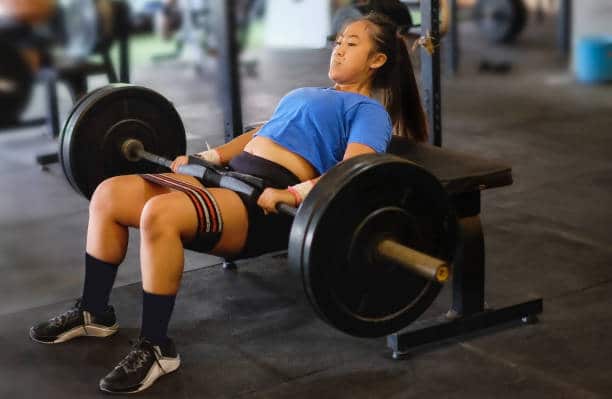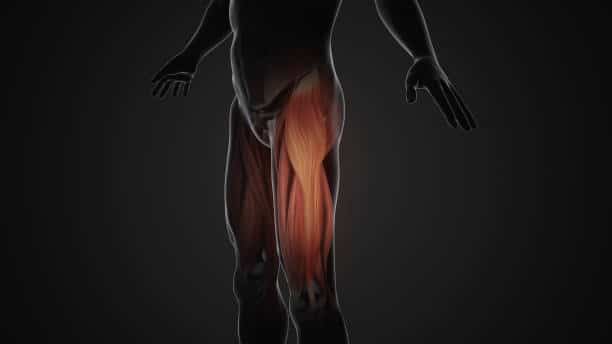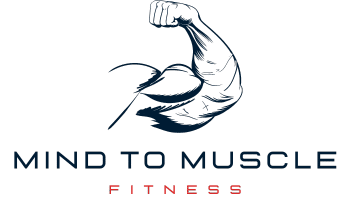
Effective Tensor Fasciae Latae Muscle Workouts
Did you know that many people experiencing hip pain are unaware of the tensor fasciae latae muscle? This small yet powerful muscle is essential for hip stability and mobility. By incorporating a targeted tensor fasciae latae muscle workouts into your routine, you can enhance lower body strength and alleviate hip pain.
Let’s explore why focusing on TFL exercises is crucial for effective hip stabilization and overall fitness.
Understanding the Tensor Fasciae Latae Muscle

The muscle known as the tensor fasciae latae (TFL) is essential for both daily motions and general body function. It’s critical to comprehend the functions of this muscle and the advantages of maintaining its strength.
The Role It Plays in Your Body
The hip abductors and the TFL muscle, which is situated in the outside hip region, collaborate closely. Stabilizing the pelvis during exercises like walking and jogging is its main purpose. Additionally, this muscle helps with the hip joint’s flexion and internal rotation.
Common Issues and How to Avoid Them
IT band syndrome is a common problem associated with the TFL muscle that can result from tension and abnormalities in the muscles. It’s critical to keep the TFL strong and flexible in order to prevent these issues. Exercises that work the hip abductors on a regular basis can help prevent injuries.
Benefits of a Strong Tensor Fasciae Latae
There are numerous benefits to having a robust and flexible TFL muscle. It improves mobility and stability, which benefits athletic performance. Furthermore, strong TFL function is also important for preventing injuries, particularly while engaging in activities that call for active hip movements.
Warm-Up Exercises for the Tensor Fasciae Latae
Effective TFL warm-ups are the first step towards a successful workout. Warming up your Tensor Fasciae Latae muscle might help you avoid injuries and perform better throughout your workouts. Take a deeper look at dynamic stretching and other warm-up exercises to make sure you’re prepared.
Dynamic Stretches to Get Started
Engaging in dynamic stretching entails actively moving your joints through their whole range of motion. Since it actively heats the TFL muscle, it is crucial for pre-exercise warming. Walking lunges and side-leg swings are good ways to activate and stretch your TFL muscle effectively.
Importance of Warming Up Properly
In addition to preparing your muscles for the exercise ahead, a proper warm-up is essential for preventing injuries. Performing TFL warm-ups quickly or without participation might result in strains or other injuries. Make sure you do this important routine for at least 5 to 10 minutes to prime your body properly.
Error-Free Preparatory Movements
Correct TFL warm-up execution is essential to efficient exercise preparation. Steer clear of typical blunders like jumping during stretches or under-using your muscles. To get the most out of the exercises and prevent injuries, concentrate on doing them with controlled, fluid motions and good posture.
Tensor Fasciae Latae Muscle Workout
This section lays out an effective workout routine for TFL strengthening. I’ll cover top exercises, a step-by-step guide, and some advanced techniques. Let’s dive in!
Top Exercises to Strengthen It
- Side-Lying Leg Raises: Lie on your side and lift your top leg to strengthen the TFL.
- Clamshells: Bend your knees, keep your feet together, and open your legs to target the TFL.
- Hip Bridge with Abduction: Perform a bridge, then move your knees apart for extra TFL engagement.
Step-by-Step Guide to Effective Workout
- Step 1: Begin with a proper warm-up. Dynamic stretches are essential for preparing your TFL.
- Step 2: Perform each exercise with controlled movements, focusing on your form.
- Step 3: Incorporate targeted exercises at least twice a week.
- Step 4: Track your progress and adjust your workout routine as needed for optimal fitness results.
Advanced Techniques for Enhanced Results
Once you’ve mastered basic exercises, add these advanced techniques to your routine to challenge your TFL muscle further: Once you’ve mastered basic exercises, add these advanced techniques to your routine to challenge your TFL muscle further: Incorporate resistance bands or single-leg movements to engage the muscle more intensely and improve stability. Focus on proper form and controlled motions to prevent strain and maximize results. For more effective results, be sure to follow specific TFL muscle workout tips, such as including dynamic stretches and combining strength with mobility exercises in your training plan.
| Advanced Technique | Description | Benefits |
|---|---|---|
| Resistance Bands | Use bands for added resistance during leg raises or clamshells. | Increases muscle activation and strengthens the TFL. |
| Weighted Hip Abduction | Hold light weights while performing hip abduction exercises. | Enhances the challenge and improves muscle endurance. |
| Single-Leg Squats | Perform squats on one leg to engage the TFL more intensely. | Improves balance and overall lower body stability. |
Recall that the strengthening of TFL requires constancy. You can improve the overall strength of your lower body and attain the best fitness results by combining targeted exercises with sophisticated approaches.
Post-Workout Stretching and Recovery
Proper post-workout care is essential to ensure efficient muscle recovery and maintain flexibility. Stretching for recovery is a key component of any fitness routine, especially after targeting the Tensor Fasciae Latae (TFL) muscle.
It would be best if you incorporated TFL cool-down exercises into your regimen right away following a workout. These workouts aid in injury prevention and pain reduction. It only takes a few minutes to increase your general mobility and performance with flexibility exercise.
I advise beginning with mild stretches that work on the TFL muscle and its surrounding tissues. Releasing tension and accelerating muscle recovery will aid in the elongation of the muscle fibres. Recall that the goal is to execute these stretches deliberately and carefully.
This is a short guide to TFL cool-down activities that work well:
- Standing Quad Stretch: Hold for 30 seconds on each side.
- IT Band Stretch: Hold for 30 seconds, breathing deeply throughout.
- Hip Flexor Stretch: Switch sides after 30 seconds.
Maintaining a regular stretching regimen for recovery after an exercise might help you become more flexible and less stiff in your muscles. It’s a quick time commitment that results in improved muscle performance and less recovery time from injuries.
| Exercise | Duration | Benefits |
|---|---|---|
| Standing Quad Stretch | 30 seconds per side | Improves quad flexibility, reduces knee pain |
| IT Band Stretch | 30 seconds | Relieves tightness in the IT band, prevents hip pain |
| Hip Flexor Stretch | 30 seconds per side | Increases hip mobility, enhances posture |
Tips for Maintaining Tensor Fasciae Latae Health
Maintaining TFL health is essential for an active lifestyle and overall agility. Let’s dive into some practical tips to ensure long-term muscle health.
- Incorporate regular stretching into your routine. This fosters TFL maintenance and prevents stiffness.
- Practice healthy hip habits by avoiding prolonged sitting. Take breaks to move around and stretch.
- Engage in activities like yoga and swimming. These low-impact exercises support long-term muscle health.
- Stay hydrated and maintain a balanced diet. Proper nutrition is crucial for muscle recovery and strength.
Adopting these habits ensures that the Tensor Fasciae Latae remains strong, flexible, and ready for any activity you love.
| Tip | Benefit |
|---|---|
| Regular Stretching | Enhances Flexibility |
| Healthy Hip Habits | Prevents Stiffness |
| Low-Impact Activities | Supports Joint Health |
| Proper Nutrition | Aids Muscle Recovery |
Remember, small daily efforts contribute significantly to long-term muscle health. Stay consistent with these tips to maintain a healthy Tensor Fasciae Latae and enjoy your active lifestyle to the fullest.
Integrating TFL Workouts into Your Fitness Routine
Incorporating tensor fasciae latae (TFL) exercises into your fitness routine can greatly enhance your overall health. To start, allocate specific days for TFL training to effectively target this muscle without disrupting your entire workout plan. Balancing these TFL-focused sessions with other fitness activities ensures a well-rounded approach to physical fitness.
When scheduling your workouts, add TFL exercises on days dedicated to lower body strength and mobility. This helps maintain consistency and integrates TFL training smoothly into your routine. Effective exercises like lateral leg raises and hip abductions fit easily into your regimen and prevent additional strain. Moderation is key to avoiding overexertion and potential injuries.
Pay attention to how your body responds. Overtraining can impede your progress, so introduce TFL workouts gradually. This mindful approach promotes sustainable growth and longevity in your fitness journey. Adjust your routine based on how you feel to create a balanced and effective workout plan.
The benefits of integrating TFL exercises go beyond muscle strength. Regular maintenance of this muscle contributes to better posture, improved balance, and overall enhanced mobility. Embrace these workouts, and you’ll likely see an improvement in your quality of life. It’s a step worth taking for anyone committed to a holistic health approach.
FAQ
What are effective TFL exercises?
Effective TFL exercises such as lateral leg raises, clamshells, and hip hikes target the tensor fasciae latae muscle. These movements improve hip mobility, reduce hip pain, and boost lower body strength.
How do I incorporate TFL exercises into my hip mobility routine?
You can integrate TFL exercises into your hip mobility routine by beginning with dynamic stretches, then performing targeted TFL strengthening exercises, and concluding with a cool-down to aid muscle recovery. Adding these steps to your overall workout regimen can enhance hip stability and mobility.
Why is it important to warm up the TFL muscle?
To prepare the TFL muscle for exercise and avoid damage, it is essential to warm it up. Dynamic stretches lessen the chance of injuries or muscle imbalances throughout your workout by improving flexibility, increasing blood supply to the muscle, and improving muscle flow.
What common issues can arise with the TFL muscle?
Common issues with the TFL muscle include tightness, muscle imbalances, and conditions such as IT band syndrome. These problems often arise from overuse or improper exercise techniques. Regular stretching and targeted strengthening exercises can help alleviate these issues.
What are the benefits of a strong TFL muscle?
Increased hip stability, enhanced athletic performance, and a lower chance of injury are all facilitated by a robust TFL muscle. Because of its importance to daily tasks and general body mechanics, its strength and flexibility are essential for leading an active, healthy lifestyle.
Can you suggest some TFL warm-up exercises?
Yes, of course! To warm up the TFL muscle, try some dynamic stretches like lunges, leg swings, and hip circles. These exercises increase the muscle’s flexibility and lower its risk of damage, so preparing it for more strenuous exercise.
How can I avoid common mistakes during TFL warm-ups?
Make sure you are completing each stretch correctly and aren’t speeding through the exercises during TFL warm-ups to avoid frequent blunders. To avoid overstretching, pay attention to form and pay attention to your body. To adequately prepare your muscles, gradually increase the intensity of your warm-up.
What are some advanced techniques for TFL workouts?
Plyometric motions, weighted exercises, and resistance bands are examples of advanced TFL workout strategies. These techniques up the ante on your workout and put the muscle under more stress, which improves strength and stability even more.
How important is post-workout stretching for the TFL muscles?
Stretching after a workout is essential for the TFL muscle because it promotes flexibility, lessens pain, and helps muscles recover. Stretches like the seated figure-four stretch and pigeon stance can help keep muscles healthy and prepared for more exercise.
What tips can help maintain TFL muscle health?
Regularly perform warm-ups, stretching, and strengthening exercises to keep your TFL muscles healthy. In addition, maintaining good posture, limiting extended sitting, and engaging in physical activity can help prevent muscle imbalances and promote long-term hip health.
How can I integrate TFL workouts into my regular fitness routine?
By designating particular days for TFL exercises, incorporating them with general hip mobility routines, and making sure your workout plan is well-balanced with both strength and flexibility training, you may incorporate TFL workouts into your normal fitness regimen.



